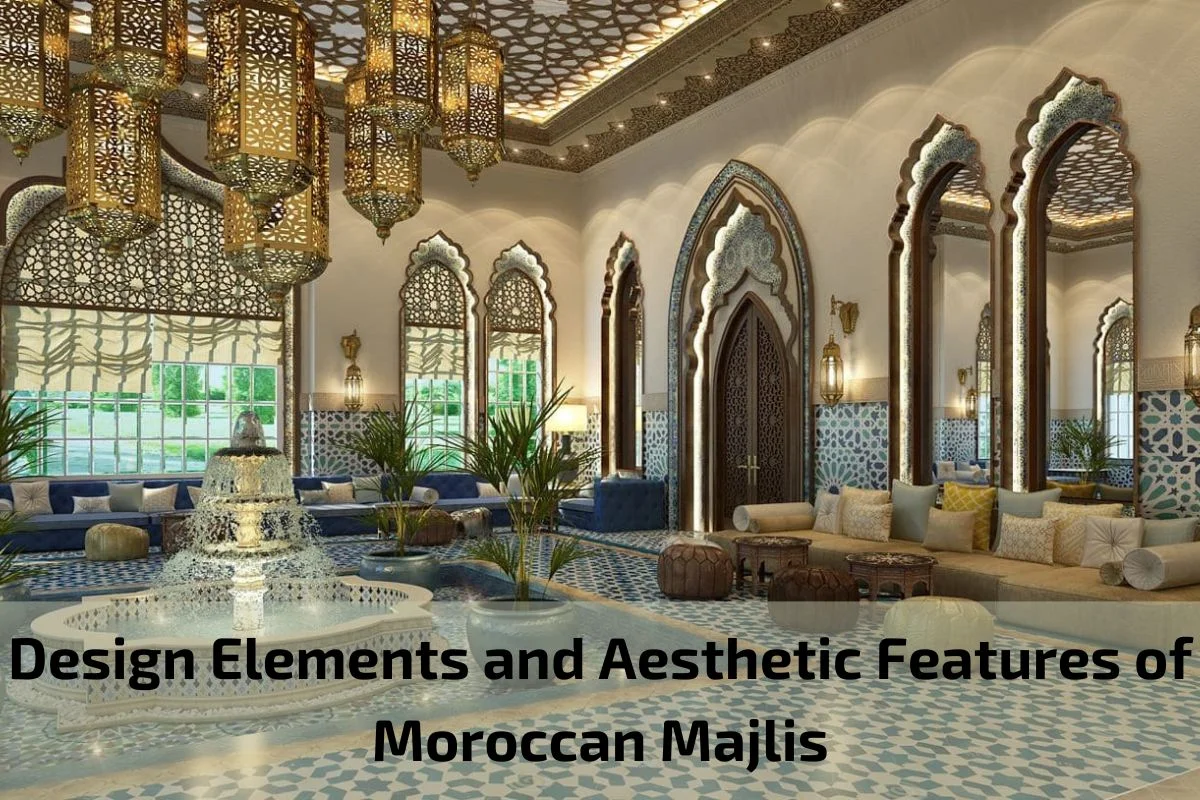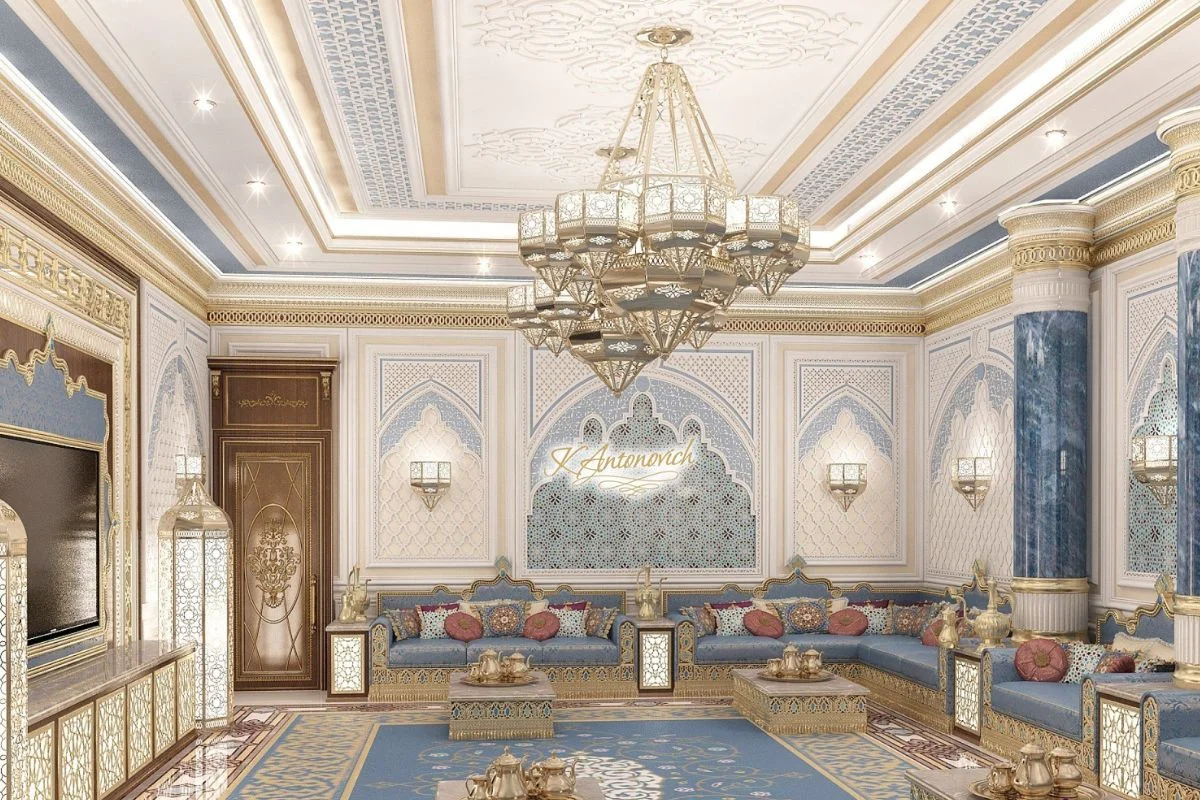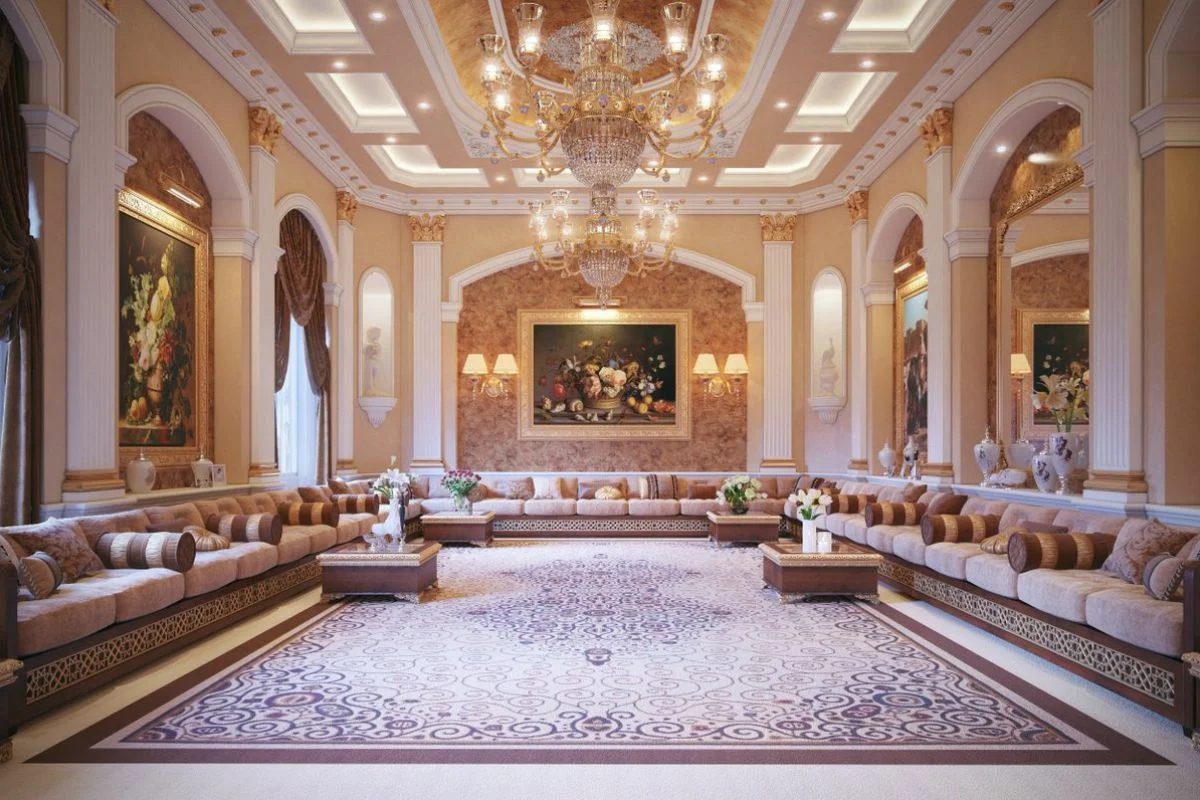Imbued with a rich tapestry of history, culture, and tradition, Moroccan majlis holds a place of honor in the world of interior design. Originating from the opulent palaces and grand residences of Morocco, the majlis embodies a captivating blend of design elements and aesthetic features that captivate the senses and evoke a sense of timeless beauty.
In this exploration of Moroccan majlis, we delve into the intricate design elements and aesthetic features that define this enchanting space. From ornate architectural details to vibrant colors and intricate patterns, the Moroccan majlis is a celebration of craftsmanship, artistry, and cultural heritage.
Join us as we embark on a journey through the mesmerizing world of Moroccan majlis, where every detail tells a story and every corner exudes an aura of elegance and sophistication. Discover the design elements and aesthetic features that make Moroccan majlis a truly magical space, and learn how you can incorporate these elements into your own home to create an ambiance of exotic luxury and timeless allure.
Importance of Moroccan Majlis in Interior Design
Moroccan majlis holds a significant place in the realm of interior design, revered for its timeless elegance, cultural richness, and unparalleled allure. As a cornerstone of Moroccan architectural heritage, the majlis serves not only as a functional space but also as a symbol of hospitality, social gatherings, and cultural identity.
One of the key aspects that underscore the importance of Moroccan majlis in interior design is its ability to create a sense of warmth, intimacy, and hospitality within a space. Rooted in the tradition of hospitality known as “salam,” Moroccan majlis welcomes guests with open arms, inviting them to relax, unwind, and connect with one another in a serene and inviting atmosphere.
Moreover, Moroccan majlis embodies a unique blend of aesthetics that seamlessly fuses traditional craftsmanship with contemporary sensibilities. From intricate geometric patterns and vibrant color palettes to ornate architectural details and luxurious textiles, the majlis exudes an air of opulence and sophistication that transcends time and trends.
In addition to its aesthetic appeal, Moroccan majlis also serves as a cultural ambassador, offering a window into the rich tapestry of Moroccan heritage and traditions. Through its design elements, architectural features, and decorative accents, the majlis celebrates Morocco’s diverse cultural influences, including Berber, Arab, Andalusian, and African motifs.
Furthermore, the versatility of Moroccan majlis in interior design cannot be overstated. Whether incorporated into traditional riads, modern homes, or commercial spaces, the majlis adds an element of exoticism and elegance that elevates the overall ambiance and character of the space.
Benefits of Moroccan Majlis
Cultural Richness: Moroccan majlis brings a wealth of cultural heritage and tradition into interior spaces. It serves as a reflection of Moroccan hospitality, social customs, and architectural history, adding depth and authenticity to any setting.
Timeless Elegance: The allure of Moroccan majlis lies in its timeless elegance and sophistication. With its intricate patterns, vibrant colors, and luxurious textiles, the majlis creates an ambiance of opulence and refinement that never goes out of style.
Versatility: One of the key benefits of Moroccan majlis is its versatility in interior design. Whether incorporated into traditional Moroccan riads, modern homes, or commercial spaces, the majlis adds a touch of exoticism and allure that complements a variety of architectural styles and aesthetics.
Hospitality and Social Connection: Central to Moroccan culture is the tradition of hospitality, known as “salam.” The majlis embodies this spirit of hospitality, providing a welcoming and inviting space for social gatherings, conversations, and communal activities, fostering connections and relationships among guests.
Aesthetic Appeal: Moroccan majlis captivates the senses with its vibrant colors, intricate patterns, and ornate architectural details. From handcrafted tiles and carved woodwork to plush cushions and intricately woven textiles, every element of the majlis contributes to its aesthetic appeal, creating a visually stunning and memorable space.
Relaxation and Comfort: Designed for relaxation and comfort, Moroccan majlis offers a sanctuary where individuals can unwind, recharge, and escape from the stresses of daily life. With its low seating, soft cushions, and inviting ambiance, the majlis provides a cozy and intimate retreat for relaxation and contemplation.
Cultural Connection: Incorporating Moroccan majlis into interior design allows individuals to connect with Moroccan culture and heritage on a deeper level. Whether through the use of traditional design elements, architectural features, or decorative accents, the majlis serves as a reminder of Morocco’s rich cultural legacy and artistic traditions.
Exoticism and Intrigue: The exotic allure of Moroccan majlis adds an element of intrigue and fascination to any space. Its unique blend of Berber, Arab, Andalusian, and African influences creates an air of mystery and enchantment that captivates the imagination and transports individuals to distant lands.
Types of Moroccan Majlis
Traditional Majlis: Traditional Moroccan majlis typically features low seating arrangements, such as cushions and poufs, arranged around a central focal point, such as a coffee table or fireplace. This type of majlis often incorporates richly colored textiles, intricate tile work, and ornate wood carvings, reflecting the cultural heritage and craftsmanship of Morocco.
Modern Majlis: Modern interpretations of the Moroccan majlis blend traditional elements with contemporary design aesthetics. While still incorporating low seating and vibrant colors, modern majlis spaces may feature cleaner lines, minimalist furnishings, and sleek finishes. This type of majlis offers a more streamlined and contemporary take on Moroccan design while retaining its inherent warmth and charm.
Outdoor Majlis: In Morocco, outdoor majlis spaces, known as “gardens” or “courtyards,” are common features of residential and commercial properties. Outdoor majlis areas often feature lush gardens, fountains, and shaded seating areas, providing a serene and tranquil retreat for relaxation and social gatherings. These spaces may incorporate traditional Moroccan elements such as mosaic tile work, wrought iron furniture, and decorative lanterns, creating an inviting outdoor oasis.
Commercial Majlis: Majlis-inspired spaces are also commonly found in hotels, resorts, and restaurants throughout Morocco. These commercial majlis areas are designed to evoke the ambiance of traditional Moroccan hospitality, with opulent furnishings, intricate decor, and luxurious amenities. Commercial majlis spaces often serve as venues for social events, meetings, and gatherings, providing guests with an immersive cultural experience.
Residential Majlis: In Moroccan homes, the majlis serves as a multifunctional space for entertaining guests, hosting family gatherings, and relaxing with loved ones. Residential majlis areas may vary in size and layout depending on the architectural style of the home, but they typically feature comfortable seating arrangements, decorative rugs, and embellished furnishings. These spaces are designed to create a warm and welcoming atmosphere for residents and guests alike.
Incorporating Moroccan Majlis into Modern Interior Design
In recent years, there has been a growing trend towards incorporating elements of Moroccan majlis into modern interior design schemes. This fusion of traditional Moroccan aesthetics with contemporary design sensibilities creates a unique and eclectic style that blends the best of both worlds. Here are some tips for seamlessly integrating Moroccan majlis into modern interior design:
Focus on Key Design Elements: When incorporating Moroccan majlis into modern interiors, focus on key design elements that define the style, such as vibrant colors, intricate patterns, and ornate details. Use these elements sparingly to add pops of color and visual interest without overwhelming the space.
Mix and Match Styles: Embrace the eclectic nature of Moroccan majlis by mixing and matching styles, textures, and materials. Pair traditional Moroccan furnishings, such as low-slung sofas and carved wood tables, with modern pieces, such as sleek sofas and minimalist accessories, to create a dynamic and balanced look.
Play with Color and Pattern: Moroccan design is known for its bold use of color and pattern. Incorporate rich hues such as deep blues, vibrant oranges, and earthy reds into your color scheme, and layer patterns such as geometric tiles, intricate textiles, and ornate rugs to add depth and dimension to the space.
Embrace Natural Materials: Moroccan design often incorporates natural materials such as wood, metal, and stone. Incorporate these materials into your modern interior by using reclaimed wood furniture, wrought iron light fixtures, and natural stone accents to add warmth and texture to the space.
Create a Cozy Atmosphere: Moroccan majlis is all about creating a warm and inviting atmosphere. Add plush cushions, soft throws, and floor pillows to create cozy seating arrangements that encourage relaxation and socializing. Use soft, diffused lighting and candles to create a soft, ambient glow that enhances the mood of the space.
Accessorize Thoughtfully: Finish off your Moroccan-inspired interior with carefully chosen accessories that enhance the overall look and feel of the space. Incorporate decorative items such as Moroccan lanterns, brass trays, and ceramic vases to add a touch of authenticity and personality to the room.
Maintaining Authenticity and Cultural Sensitivity
As we embrace the beauty and allure of Moroccan majlis in modern interior design, it’s essential to maintain authenticity and cultural sensitivity. Incorporating elements of Moroccan design into our homes is a celebration of the rich cultural heritage and artistic traditions of Morocco. Here are some guidelines for maintaining authenticity and cultural sensitivity:
Respect Cultural Traditions: Approach Moroccan design with respect for its cultural traditions and significance. Understand the historical context and symbolism behind various design elements, and avoid appropriating or misrepresenting Moroccan culture for superficial trends.
Educate Yourself: Take the time to educate yourself about Moroccan culture, history, and traditions. Learn about the significance of Moroccan majlis, the meanings behind different patterns and motifs, and the craftsmanship involved in traditional Moroccan design. This knowledge will deepen your appreciation for Moroccan design and help you make informed design choices.
Source Authentic Materials: When incorporating Moroccan-inspired elements into your home, strive to source authentic materials and craftsmanship. Look for handmade textiles, artisanal ceramics, and traditional craftsmanship that reflect the authentic beauty and craftsmanship of Moroccan design.
Support Artisans and Local Communities: Whenever possible, support Moroccan artisans and local communities by purchasing handmade goods and supporting fair trade practices. By investing in authentic Moroccan craftsmanship, you not only ensure the quality and authenticity of your design elements but also contribute to the livelihoods of artisans and their communities.
Avoid Stereotypes and Cultural Appropriation: Be mindful of cultural stereotypes and avoid appropriating Moroccan culture for decorative purposes. Respect the cultural significance of Moroccan design elements and avoid reducing them to mere aesthetic trends or fashion statements.
Adapt with Sensitivity: While it’s perfectly acceptable to adapt Moroccan design elements to suit modern interior aesthetics, do so with sensitivity and respect for the original cultural context. Consider how each design choice aligns with the spirit of Moroccan design and strive to maintain the authenticity and integrity of the overall aesthetic.
Conclusion
Incorporating Moroccan majlis into modern interior design offers a captivating fusion of tradition and innovation, creating spaces that are both stylish and culturally rich. By embracing the key design elements and aesthetic features of Moroccan design, we can create interiors that evoke the timeless elegance and exotic allure of Moroccan majlis while remaining sensitive to its cultural heritage.



